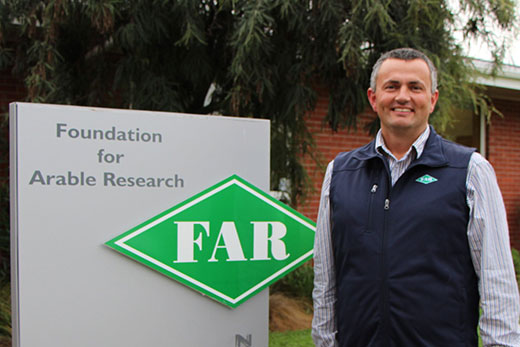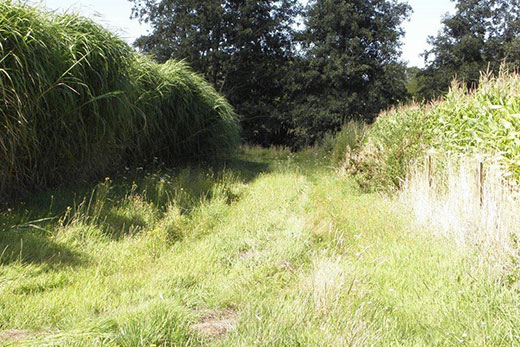In future Waikato and Bay of Plenty farmers may be growing a wider range of forage crops, including peas and faba beans, according to the Foundation of Arable Research.

FAR research and extension team leader Allister Holmes.
Annual clovers
“Maize is the main crop grown in the North Island but there is potential to grow others such as Lucerne, annual clovers, beans, miscanthus, peas and potatoes,” says Allister.
Miscanthus is a tropical grass, which has the ability to remove nutrients, including nitrogen, from effluent paddocks as well as possibly being a useful supplementary feed source.
Allister says crop rotation, using short sequence crops like oats, barley, peas, beans and sorghum can help reduce the time land is out of production.
Selecting drought-tolerant crops is also important, even though the regions haven’t traditionally had a history of frequent droughts.
“We have to be aware of the impacts of more extreme weather in future; and crops which are water efficient will become more important, especially as irrigation is not widespread in the Waikato and BOP regions.”
While seed companies do extensive research and development on new varieties of maize for grain or silage, Allister says the success of each variety depends largely on how it’s grown – so FAR concentrates on finding the best techniques for sowing, growing, fertiliser and controlling pests and diseases in the crops.
Slug pests
“Among the problems facing farmers growing maize using no-till techniques are slugs, which can rapidly chew through young plants,” says Allister.
Work is underway to find a biological control to reduce the use of pesticide sprays.
“There is a nematode, which attacks slugs, and we’re trying to find it in several regions of New Zealand because if it is already widespread then we don’t have to go through the approval processes required to introduce a new organism to New Zealand.”
Farmers, as growers, play a vital role in FAR’s research and development, says Allister. “Some of the best discoveries or techniques often come from observation; like the farmer who noticed fewer insect pests on his crop, because they were being attracted away by a neighbouring crop of borage. That has led to some farmers planting borage around the perimeter of their crops.”

A crop of Miscanthus and maize on right.
Field days
Regular field days, discussion groups, conferences, seminars, publications and newsletters are among the ways FAR’s research findings are made available to farmers.
Allister says he’s always keen to hear from farmers who have a particular issue they want to discuss.
As well as research undertaken in New Zealand, FAR, which has a branch in Australia, also has close links with similar organisations in the UK and the USA so is up-to-date with the latest overseas research.
# The Foundation for Arable Research is an applied research and information transfer organisation responsible primarily to New Zealand arable growers. Funding comes from: a compulsory levy collected from arable growers; grants; co-operative research and information sales. Every five years growers have opportunity to vote for the continuance of FAR, and currently FAR has more than 80 per cent support from farmers. For more information, see www.far.org.nz



0 Comments
Leave a Comment